Helianthus annuus: All About Common Sunflowers
Looking for a wildflower that’s both beautiful and useful? Look no further than the common sunflower, or Helianthus annuus. This annual sunflower is known for its large flower head and distinctive yellow petals surrounding a dark center. But there’s more to this plant than just its looks.
Helianthus annuus got its name because of its unique ability to track the sun’s movement across the sky during the day, a process called heliotropism. It’s also commonly cultivated for its edible seeds and oil, making it an important crop in many parts of the world.
But what else should you know about this fascinating plant? In this article, we’ll dive into some key facts about Helianthus annuus, including its growing conditions, appearance, and uses. So whether you’re a gardener looking to add some color to your yard or just curious about one of nature’s most interesting plants, keep reading to learn more about the common sunflower.
Characteristics of Sunflowers
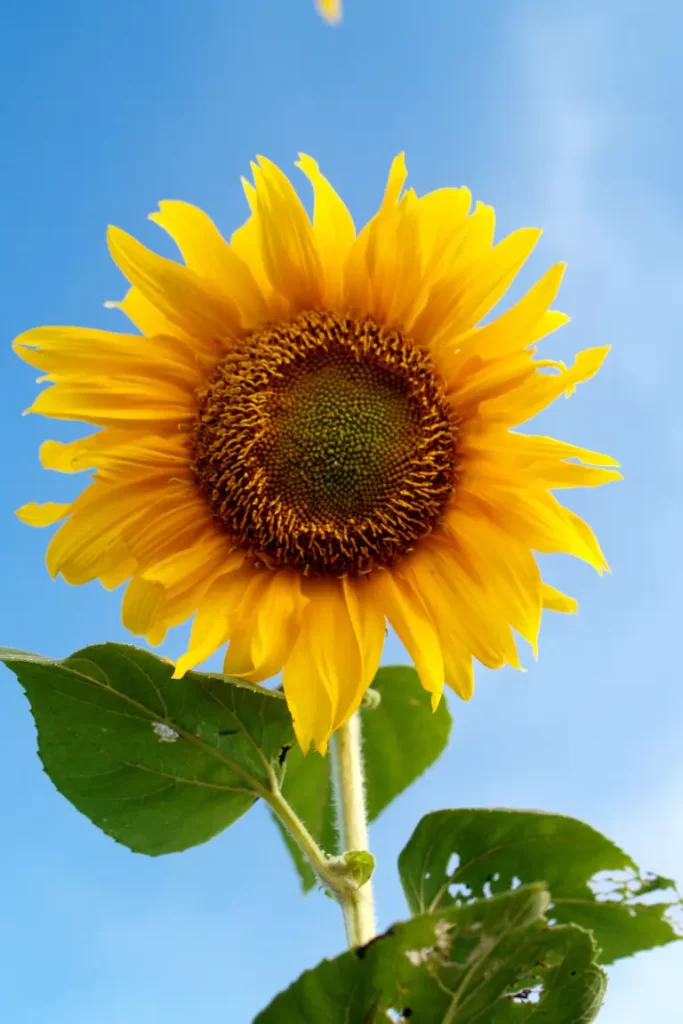
Sunflowers are fascinating plants that belong to the Helianthus annuus species. They come in many different types and forms, ranging from small dwarf varieties to mammoth ones. In this article, we will discuss some of the characteristics of sunflowers, including their habitat and growth patterns.
Habitat
Sunflowers are native to North America but can now be found in many habitats around the world. They grow best in areas with plenty of sunlight, well-draining soil, and moderate moisture levels. Some common habitats for sunflowers include fields, meadows, prairies, roadsides, and gardens.
One interesting fact about sunflowers is that they have a unique growth pattern where they follow the sun throughout the day. This process is known as heliotropism and helps the plant maximize its exposure to sunlight for photosynthesis.
Growth Patterns
Sunflowers have a relatively short lifespan compared to other plants. The bloom time for sunflowers varies depending on the species, with some blooming in the summer and others in the fall. Typically, sunflower seeds are planted in early spring or late summer/early fall.
Once planted, sunflower seeds germinate within 7-10 days and start growing rapidly. Within a few weeks, seedlings emerge above ground level with two small leaves known as cotyledons. As they continue to grow taller over time (up to 16 feet), they develop large broad leaves that can range from small to mammoth varieties.
As mentioned earlier, one interesting characteristic of sunflowers is their ability to track the movement of the sun across the sky during daylight hours through heliotropism. This allows them to maximize their exposure to sunlight for photosynthesis.
How do you identify common sunflowers?
Common sunflowers (Helianthus annuus) can be identified by several key characteristics:
- Height and Growth Habit: Common sunflowers are tall plants that can reach heights of 5 to 12 feet (1.5 to 3.6 meters). They have a single, thick, and hairy stem that stands upright.
- Leaves: The leaves of common sunflowers are large, rough-textured, and arranged alternately along the stem. Each leaf is typically heart-shaped or lanceolate with a toothed or serrated edge. The leaves have a rough texture due to small hairs covering the surface.
- Flowers: The characteristic yellow flowers of common sunflowers are large and daisy-like, with a dark brown center called the disc florets surrounded by bright yellow ray florets. The disc florets are tightly packed in the center, while the ray florets radiate outward in a circular pattern. The flowers can measure 2 to 8 inches (5 to 20 centimeters) in diameter.
- Flowering Season: Common sunflowers typically bloom in late summer or early fall, although the exact timing may vary depending on the region and growing conditions.
- Seeds: After the flowers fade, common sunflowers develop large seed heads filled with edible seeds. These seeds are typically flat, oval-shaped, and covered by a gray or black outer shell.
What are the leaves of a common sunflower?
The leaves of a common sunflower (Helianthus annuus) are large and rough-textured. They are typically arranged alternately along the stem. Each leaf is usually heart-shaped or lanceolate, meaning it tapers to a point at the end, with a toothed or serrated edge. The leaves have a rough texture due to small hairs covering the surface. The color of the leaves is typically a medium to dark green.
Agricultural Uses of Sunflowers: Oil Production and Livestock Feed
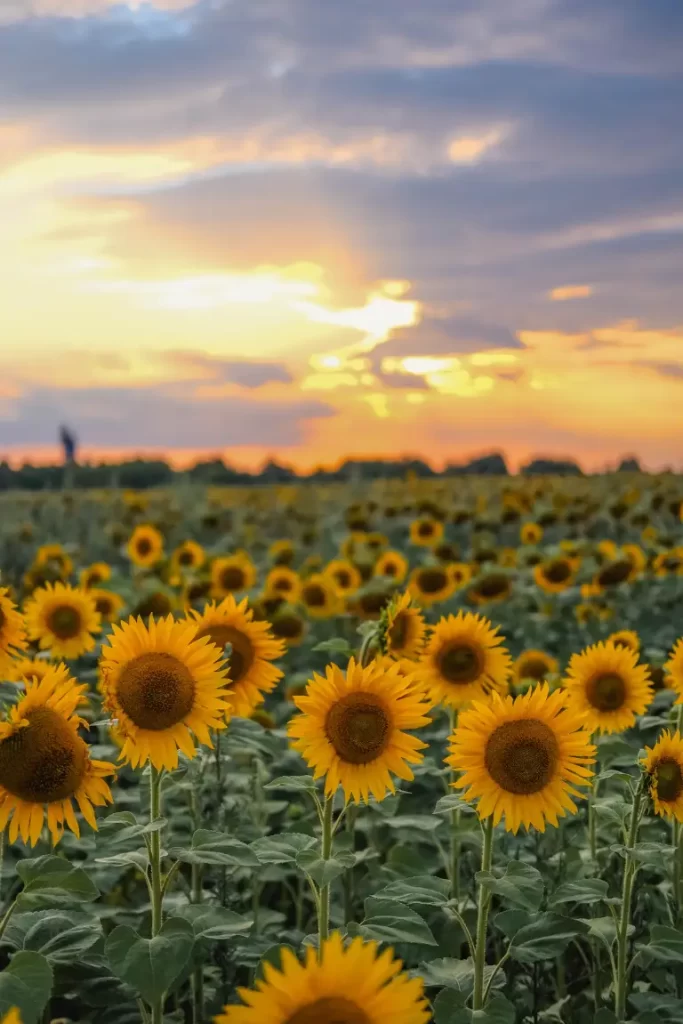
Sunflowers (Helianthus annuus) are widely used in agriculture for their oil production and as livestock feed due to their high nutrient content. In this article, we will discuss the various agricultural uses of sunflowers, including their use in oil production and as livestock feed.
Sunflower Oil Production
Sunflower oil is extracted from the seeds of the sunflower plant and is a popular cooking oil due to its neutral flavor and high smoke point. It is also a healthy alternative to other cooking oils as it contains low levels of saturated fats and high levels of unsaturated fats such as linoleic acid.
Apart from its use in cooking, sunflower oil is also used in the production of biodiesel fuel. Biodiesel produced from sunflower oil has similar properties to diesel fuel but with lower emissions, making it an environmentally friendly alternative to traditional diesel.
In addition to being a source of edible oil, sunflowers are also used for industrial purposes such as lubricant production. The high oleic acid content in some varieties makes them suitable for producing industrial lubricants that are more stable at higher temperatures.
Livestock Feed
Sunflowers are also commonly used as livestock feed due to their high nutrient content. Sunflower meal, a byproduct of oil production, is often used as a supplement in livestock feed to improve animal growth and health. It is particularly useful for ruminants such as cattle, sheep, and goats because it is rich in protein and fiber.
Apart from sunflower meal, whole or crushed sunflower seeds can also be fed directly to animals. This is especially true for poultry where sunflower seeds are added to chicken feed mixes because they contain essential amino acids that promote growth and egg-laying capacity.
The use of sunflowers as livestock feed has several benefits over other types of feeds such as corn or soybeans. Sunflowers have a lower risk of contamination with mycotoxins, which are harmful substances produced by fungi that grow on crops such as corn and soybeans.
Moreover, sunflowers can be grown in areas where other crops may not thrive due to their tolerance to drought and high temperatures. This makes them suitable for use in regions with arid climates where water availability is limited.
Edible uses of sunflowers
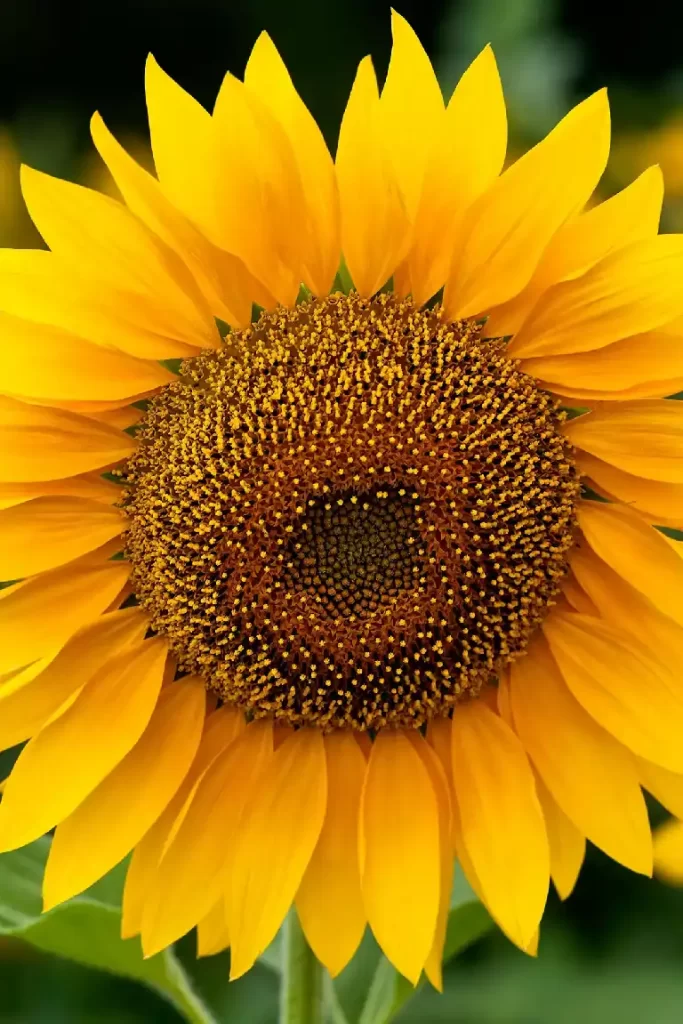
Sunflowers (helianthus annuus) are not only beautiful to look at, but they also have many edible uses. From the seeds to the petals, sunflowers can be incorporated into a variety of dishes for added flavor and nutrition.
Sunflower Seeds
One of the most common ways to consume sunflowers is through their seeds. These can be eaten raw or roasted as a snack, providing a satisfying crunch and nutty flavor. Sunflower seeds are also a popular addition to trail mix or granola bars for an energy boost on-the-go.
In addition to snacking, sunflower seeds can be used in cooking and baking. They can be ground into a flour and used as a gluten-free alternative in recipes like pancakes or muffins. Alternatively, whole or chopped seeds can be added to bread dough for added texture and flavor.
Sunflower Oil
Another edible use of sunflowers is through their oil. Sunflower oil is made from pressing the seeds and is commonly used in cooking due to its high smoke point and neutral flavor. It’s often used in frying or sautéing because it doesn’t break down at high temperatures like other oils might.
Sunflower oil is also a common ingredient in salad dressings or marinades because it emulsifies well with other liquids.
Sunflower Petals
While less commonly consumed than the seeds or oil, sunflower petals are also edible. They make for a colorful addition to salads or can be used as a garnish for desserts like cakes or cupcakes.
To prepare sunflower petals for consumption, simply remove them from the stem and rinse thoroughly before adding them to your dish.
Growing Your Own Sunflowers
If you’re interested in incorporating more sunflowers into your diet, consider growing your own! You can easily grow sunflowers from existing plants by collecting their mature heads and planting the seeds in soil.
Alternatively, you can purchase sunflower seeds from a gardening store or online retailer. Sunflowers are relatively easy to grow and can provide a beautiful addition to any garden.
Ornamental Purposes of Sunflowers
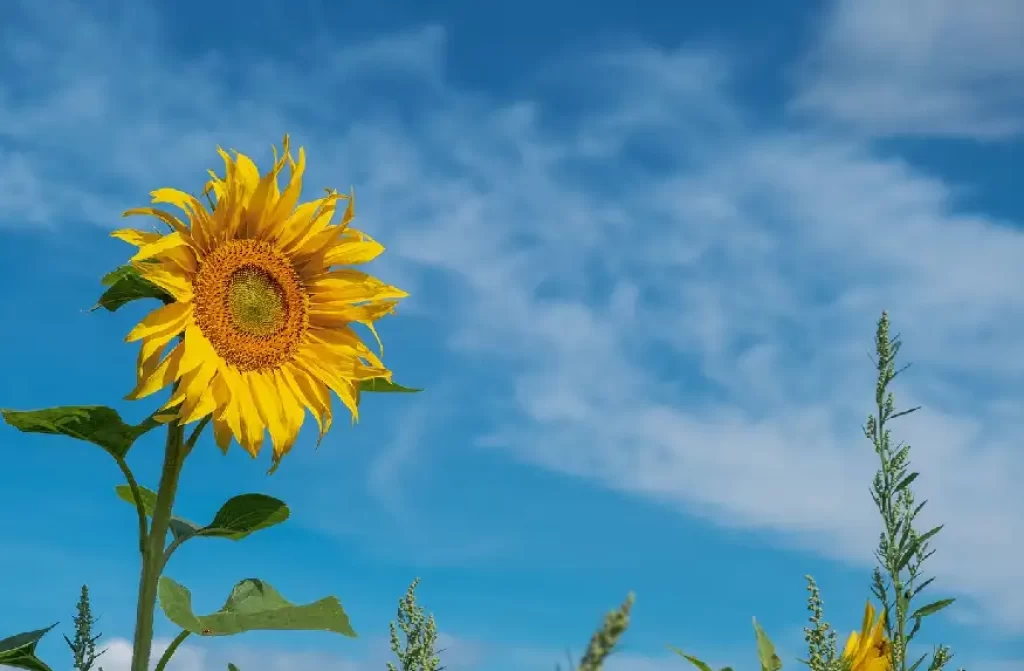
Sunflowers are more than just a source of food or oil. These beautiful flowers are also grown for their ornamental value.
The Beauty of Sunflower Flower Heads
One of the main reasons why sunflowers are so popular for ornamental purposes is their large and vibrant flower heads. These blooms can range from 4 inches to over 2 feet in diameter, depending on the variety. The petals come in shades of yellow, red, orange, and even brown.
But what makes these flower heads truly unique is how they’re composed. Each bloom is made up of many small florets arranged in intricate spirals. The outermost petals are known as ray flowers, while the center ones are called disk flowers.
A Common Sight in Gardens
Sunflowers are a common sight in gardens all around the world. They add a splash of color to any landscape and attract pollinators such as bees and butterflies.
These flowers also come in different sizes that suit various garden spaces. For instance, dwarf varieties grow only 1-2 feet tall while giant types can reach up to 16 feet! This versatility makes them an excellent choice for both large estates and small urban gardens.
Popular Choice for Floral Arrangements
The striking appearance of sunflowers has made them a popular choice for floral arrangements as well. Fresh-cut sunflowers can brighten up any room with their warm colors and cheerful vibe.
Dried sunflowers have become increasingly popular too because they retain their shape and color long after they’ve been cut. They’re often used to create rustic home decor or seasonal displays like wreaths or garlands.
Symbolism Behind Sunflowers
In many cultures around the world, sunflowers hold significant symbolism beyond their beauty. They’re seen as a symbol of happiness, positivity, and longevity.
For instance, in Chinese culture, sunflowers are associated with good luck and fortune. In Native American traditions, they represent the harvest season and the bounty of nature. And in Western cultures, they’re often given as gifts to express feelings of joy or admiration.
Ecological importance of sunflowers for pollinator habitats
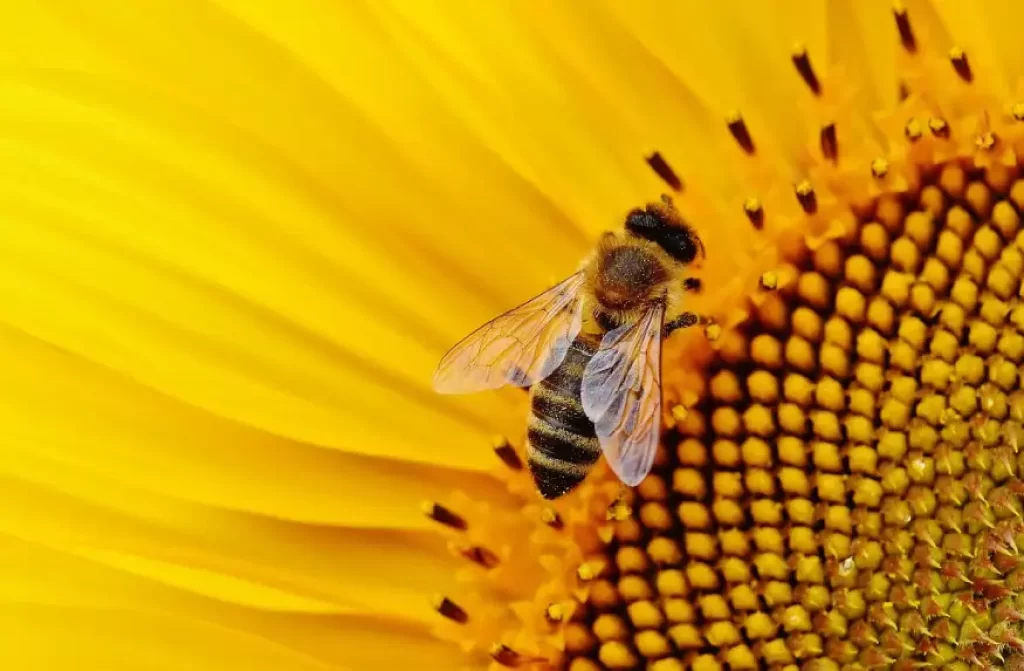
Sunflowers are not only beautiful to look at but also play a crucial role in supporting pollinator populations and providing important habitat for birds. Here are some talking points on the ecological importance of sunflowers for pollinator habitats, including attracting bees and butterflies.
Sunflowers as a source of nectar and pollen
Bees and butterflies are crucial pollinators for many plants, including crops that humans rely on for food. Sunflowers are an important source of nectar and pollen for these insects, providing them with the energy they need to carry out their important work.
The large size and bright color of sunflowers make them highly visible to pollinators, making it easier for them to locate and collect nectar and pollen.
Sunflowers as a source of food for birds
In addition to supporting pollinator populations, sunflowers also provide a source of food for birds. During the fall and winter months when other food sources may be scarce, sunflower seeds can be an important part of many bird species’ diets. Finches, chickadees, nuthatches, and other species all rely on sunflower seeds as a valuable food source.
Sunflowers as habitat for birds
Sunflowers can also provide shelter and nesting sites for birds that prefer open habitats. By planting sunflowers in gardens or other areas, individuals can help support bird populations by providing important habitat.
Potential for Phytoremediation with Sunflowers
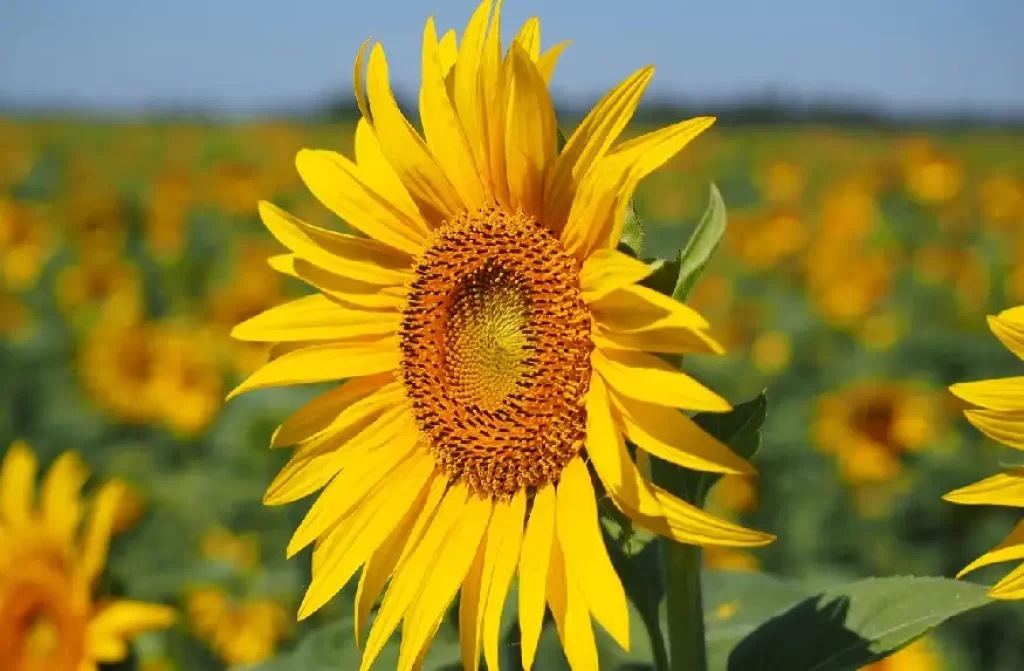
Sunflowers are not just beautiful plants that adorn gardens and fields, but they also have the potential to clean up contaminated areas.
This process is called phytoremediation, and sunflowers are well-suited for it due to their ability to grow in dry and disturbed areas. In this article, we will discuss how sunflowers can be used for phytoremediation and why they are a cost-effective and environmentally friendly solution.
Native Plants for Phytoremediation
Phytoremediation is a natural way of cleaning up contaminated soil or water using plants. It is a sustainable alternative to conventional methods that involve excavation or chemical treatment. Sunflowers are native plants that have been found to be effective in phytoremediation because of their deep roots that can absorb pollutants from the soil.
These roots can reach depths of up to 15 feet, making them ideal for removing contaminants from deep within the ground.
Soil Remediation with Sunflowers
Sunflowers can remove pollutants such as heavy metals and organic compounds from the soil through a process called phytoextraction. During this process, the plant’s roots absorb the contaminants from the soil into its tissues. The contaminants are then transported to the above-ground parts of the plant where they accumulate in high concentrations. Once harvested, these parts can be disposed of safely.
The red pigment in sunflowers called anthocyanin has been found to enhance their ability to remove pollutants from the soil. Anthocyanin acts as an antioxidant and helps protect the plant against oxidative stress caused by exposure to pollutants.
Water Remediation with Sunflowers
Sunflowers can also be used for phytoremediation of water bodies such as ponds or lakes that have been contaminated with heavy metals or other toxic substances. The roots of sunflowers absorb these pollutants directly from water through a process called rhizofiltration. Once the pollutants are absorbed, they are transported to the above-ground parts of the plant where they can be harvested and disposed of safely.
Cost-Effective and Environmentally Friendly Solution
Phytoremediation is a cost-effective and environmentally friendly solution to clean up contaminated areas. It does not involve the use of harmful chemicals or heavy machinery, making it a safer alternative for both humans and the environment.
Sunflowers are particularly well-suited for phytoremediation because they are low-maintenance plants that require little water or fertilizer.
Conclusion: The Versatility and Significance of Sunflowers
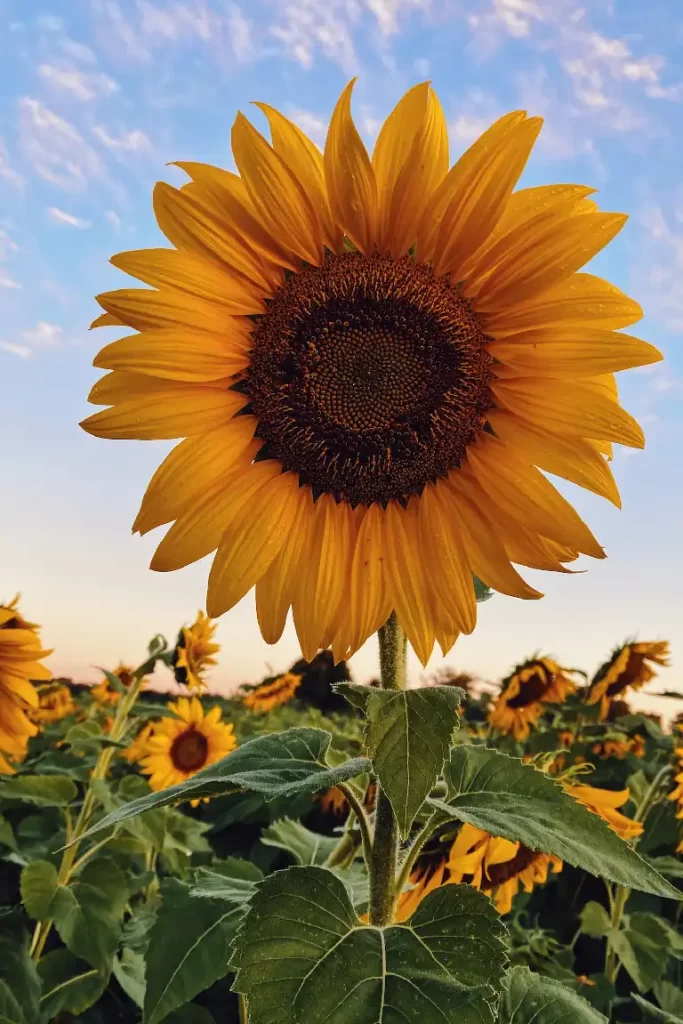
Sunflowers, with their striking yellow petals and brown centers, are more than just a pretty face. These plants have proven to be incredibly versatile, finding uses in various industries and ecosystems.
From an agricultural standpoint, sunflowers are used for both oil production and livestock feed. Their seeds contain high levels of healthy fats that can be extracted for cooking oil or used as a nutritious addition to animal feed.
But sunflowers aren’t just for eating – they also make great snacks and ingredients in baking recipes. And let’s not forget about their ornamental purposes. Sunflowers are popular in gardens and floral arrangements due to their bright colors and large size.
Beyond their commercial uses, sunflowers play an important role in pollinator habitats. They attract bees and butterflies, helping to ensure the health of our ecosystems.
Furthermore, sunflowers have the potential to aid in phytoremediation efforts. This involves using plants to remove pollutants from soil or water – something that sunflowers have been shown to excel at.
In conclusion, it’s clear that sunflowers are much more than just a beautiful plant. Their versatility makes them valuable across many different industries and ecosystems. As we continue to explore new ways of utilizing this amazing plant, it’s important that we also prioritize its preservation so that future generations can enjoy all the benefits that it has to offer.







